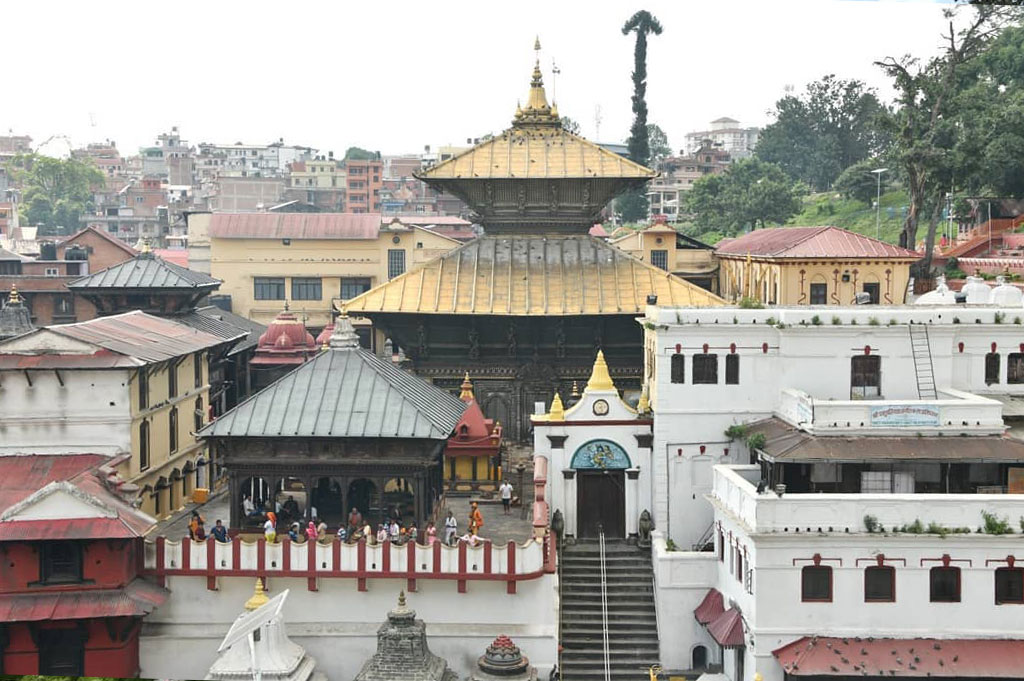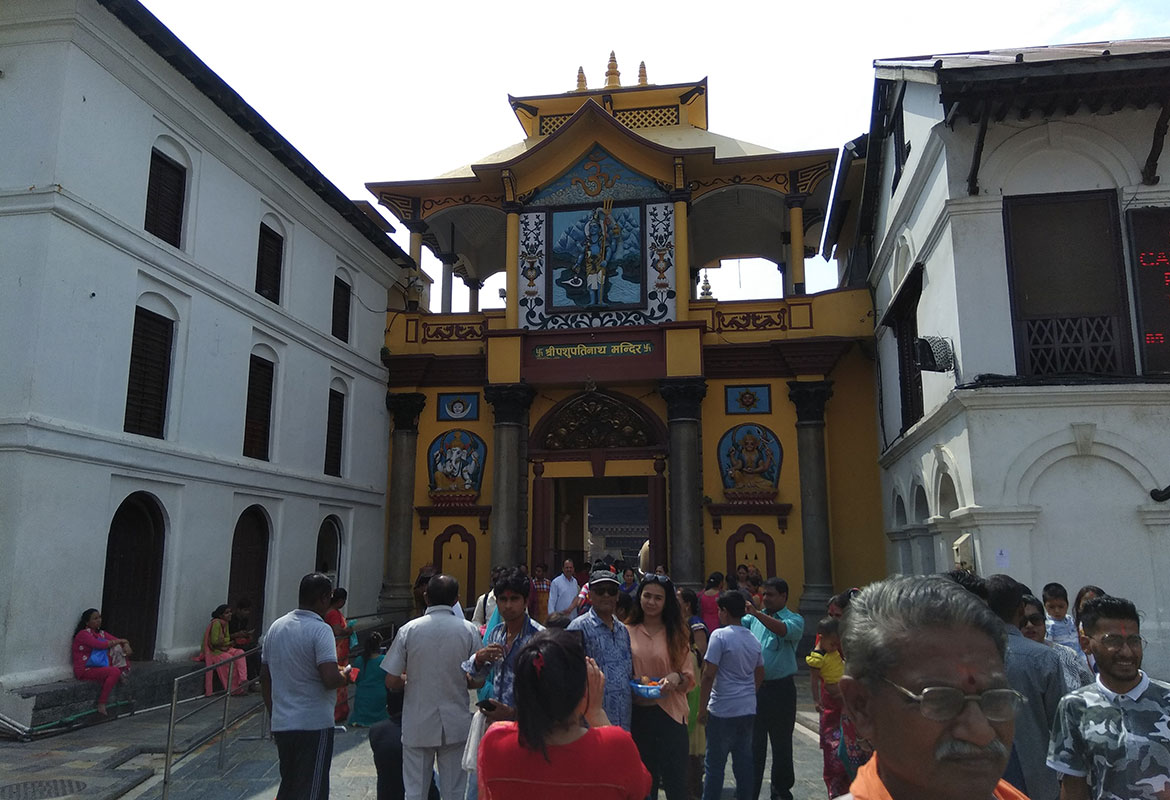Pashupatinath Temple
A hub of the almighty Pashupatinath who is considered as the most revered God in Nepal, the Pashupatinath Temple is widely prevalent as the guardian of each and every living being on the earth.
Entangle yourself in the bygone tales associated with the Kathmandu’s most ancient Pashupatinath Temple…
Deriving its meaning from three Sanskrit words “Pashu” denoting animal, “Pati” denoting husband/protector and “Nath” denoting God, the Pashupatinath Temple is recognized as the oldest Hindu Temple situated in Kathmandu. It is worldly prominent amongst the four ardently visited and the most pious religious sites in Asia especially for the followers of Lord Shiva. However, some people also use the word ‘Shree’ in its starting that is nothing but just a normal designation. Thus, on a whole- the Pashupatinath Temple is considered to be a protector of the beings on this planet. Also, this spiritual hub is counted amongst the Kathmandu Valley’s 8 UNESCO Cultural Heritage Sites and is witnessed as the most prominent cremation site for undertaking the last rites of Hindus. However, it is highly recommended that the people who are faint-hearted shall not see the cremation ceremonies going on continually at the Pashupatinath Temple. This destination is not a museum or a picnic spot but still, it carries a positive aura as well as the happiness and is also a ‘centre of energy’ for all those who are striving to experience a high dose of spirituality. Also, one shall witness a plethora of devotees indulged in their own religious activities day and night at this beguiling spot.
The Pashupatinath Temple is known to have the largest temple complex that is said as the one extending on the both sides of the holiest river of Hindus i.e. the Bagmati River. It is a Pagoda shaped establishment incorporating the roof that is gilded accompanied with the four sides which are seen covered with silver as well as the wooden carvings of the most decent quality. While being here, one is surely going to fall in love with its surroundings dotted with an array of temples comprising of Hindu and Buddhist deities. It is prevalent as the centre for the ‘discovery of Shiva lingam’ and is marking its existence commencing right from the 5th century. Tucked in the middle of Deopatan, the Pashupatinath finely demonstrates the Lord of Animals- the almighty Shiva known as the Pashupati. As notified, the temple stands right at an elevation of 24.6 meters above the ground established on a single-tier plinth and is banned for the people belonging to the Non-Hinduism background, however one can have a splendid view of this pilgrimage from the opposite bank of the Baghmati River.
It is associated with abundant myths with majority of them being woven based on the deity Potu Raju who is known as the original Dravidian whose Sanskrit version is the Pashupati.
As uttered by the Nepal Mahatmaya and Himvatkhanda, the Pashupatinath Temple carries a massive spiritual relevance as it is accompanied with a majestic tale connected with Lord Shiva. It was notified that Lord Shiva was quite bored of his abode that was on the top of the Mount Kailash and he went on to search a new place to escape. He later on came to know about the Kathmandu Valley and started residing there where he was made the centre of attraction and named as the ‘Lord of Animals’ long before other varied Gods were able to spot him. Shiva took the form of a deer to hide from the searchers however God Vishnu recognized him and decided to grab him by the horns which as a conclusion broke into abundant pieces. The establishment of the temple was thus done by Lord Vishnu where he used the broken horns with an intention of forming a linga on the Bagmati River’s bank and as the time flew away the temple started burying deep into the soil and was soon forgotten by the people there. However, one fine day a cow entered and sprinkled her milk on the mound that was created by the temple buried under the land and thus, apparently the lost lingas were again founded leading to the formation of the temple.
One can find each and every aspect that can be included in the pagoda style of architecture in this temple i.e. the wooden carvings for the resting purposes as well as the cubic constructions. Symbolizing the religious thought, the temple also incorporates the gold pinnacle along with a gigantic statue of bull or Nandi yet again covered with gold. Mentioning the most prominent festivity celebrated here with high zeal and enthusiasm is none other than the Shivaratri, also known as the night of Lord Shiva and thus, this temple is the most crowded one during this festival with the presence of thousands of devotees. The area of the Pashupatinath temple is a hub of exquisiteness and also an array of vibrant sites with some of the most favoured ones being the Guheswari Temple, Chabahil and the very beautiful Chandra Vinayak. One can get here through the Kathmandu’s Tribhuvan airport containing many flights which fly straight to Kathmandu and in case you are striving to attain some sort of adventure, then nothing’s apt than the overland route to Kathmandu connected through the roads from Kakirivitta, Nepaljung, Janakpur along with abundant others.
More Places to Visit
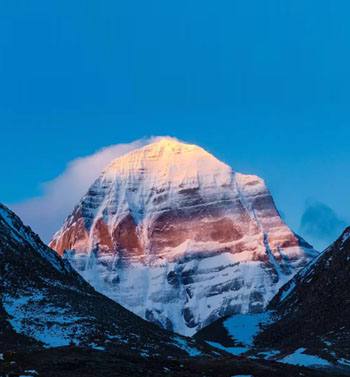
Mount Kailash
A winsome mystical agglomeration, a heavenly abode to Lord Shiva, an immensely esteemed pious destination ardently followed by thousands of devotees from all over the world- this is what defines the spiritual as well as..
VIEW DETAILS
Lake Mansarovar
The holiest lake of Tibet and also considered to be the world’s highest fresh-water lake, Lake Manasarovar is clipped in the far western Tibet Ngari Prefecture that is known to be ‘not so far’ from the mighty Mt Kailash.
VIEW DETAILS
Yam Dwar
Situated in the foothill of holy Mount Kailash, the Gate of Salvation, the Yam Dwar is one of the most prominent destinations in the Kailash Manasarovar Yatra. Engross in its spiritual relevance and feel serene!
VIEW DETAILS
Gauri Kund
Gauri Kund, a water body that is also known as the Lake of Compassion, lies on the way while Siwasthalgoing on downwards from Dolma - La (Dolma Pass). This steep descent from Dolma Pass is a wonderful lake which is at an..
VIEW DETAILS
Tirthapuri
Next to the Sutlej River on the north bank, the Tirthapuri Hot Springs fill the infertile backdrop for this area with steam. Devotes normally visit Tirthapuri after the Kailash pilgrimage this is also considered that..
VIEW DETAILS
Om Parvat
OM Parvat is the magical and inspiring Himalayan mountain peak that rises to an altitude of Om Parvat Hindu mantra6191 m lying in the Darchula district. It is known by various names such as Adi Kailash, Chhota Kailash,
VIEW DETAILS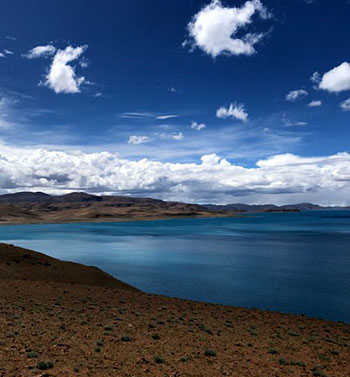
Lake Rakshas Taal
The lake of the Demon. Rakshas Tal is situated west of holy Manasarovar Lake near Mt Kailash. The river Sutlej originates from the north-western tip of Rakshas Tal. At the height of about 4752 meters (15,591 ft)..
VIEW DETAILS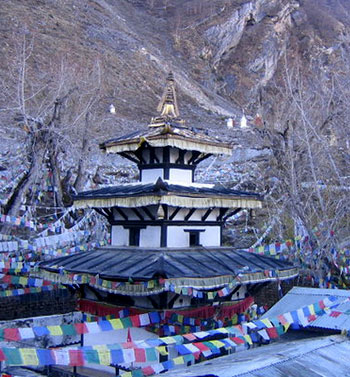
Muktinath Temple
Located at an altitude of 3,610 meters (11,872 feet) at the base of the Thorong La mountain pass in the Mustang district, Muktinath is a highly venerated sacred place for both Hindus and Buddhists.
VIEW DETAILS
Saptarishi Caves
The Saptrishi Caves are considered to be an extreme hub in the Mount Kailash Inner Parikrama. As well these caves are counted amongst the most difficult treks experienced at the time of the Kailash Inner Kora.
VIEW DETAILS
Nandi Parvat
Nandi Parvat is considered to be one of the most vital peaks in Kailash Mansarovar Yatra and thus holds utmost significance. A visit and trek to Nandi Parvat is only possible during Kailash Inner Kora tour.
VIEW DETAILS
Guge Kingdom
A highly mysterious country, Tibet contains some of those breathtaking historical sites which you can’t even imagine would have existed and one of these is the Guge Kingdom. It is counted amongst the most powerful..
VIEW DETAILS
Jal Narayan Vishnu
The highly devoted Yatra to reach the ultimate Heavenly abode of the almighty Lord Shiva i.e. the Mount Kailash is counted amongst the most difficult terrains of all times. But, its results are undoubtedly fruitful...
VIEW DETAILS





